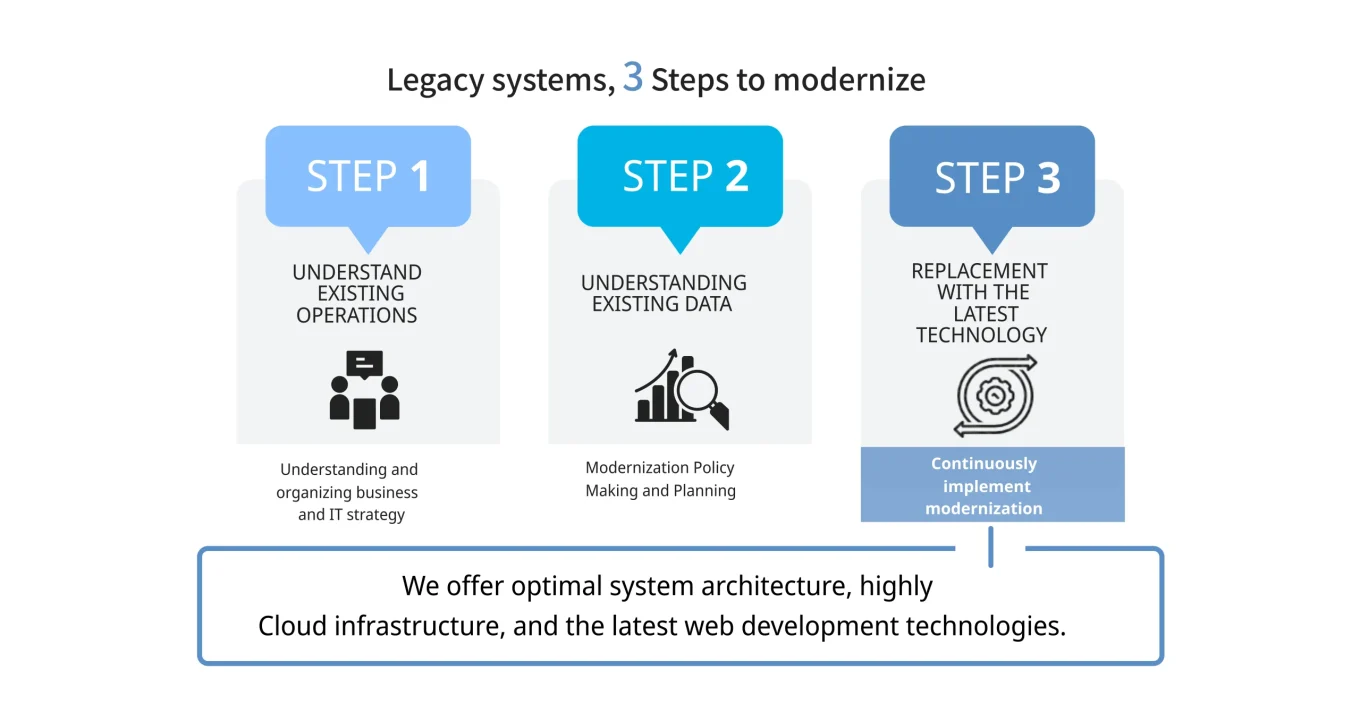Legacy System Modernization
- Home
- portfolio
- Development
- Systems
- Legacy System Modernization

Legacy System
Modernization - Accelerate your business with new technology
Legacy System Challenges
Legacy systems require a structural review, so rather than deepening our understanding of the existing system,
we understand “existing operations” and “existing data” and propose a new system using the latest technology. We will do so.
We have carried out legacy system update projects at the request of many of our customers.
Although there are differences in size and role in the business, the following points are common.
1. Technician Problems
Lack of successor
When considering an ERP package, the central management of data including human resources and accounting is promoted, but if the business adopts a highly unique supply chain management, it may be difficult to handle everything with one package software. This may lead to unreasonable demands, resulting in increased costs for the initial system construction and operation, or a half-hearted response in any business area.
Black box
Lack of maintenance
2. Unable to respond to changes in work / business
Scalability
External collaboration
Weak coordination with external parties, especially the inability to collaborate in real time, makes it incompatible with operations/businesses that require immediacy, such as e-commerce.
Execution location
Our approach to updating legacy systems
1. Understanding existing operations
2. Understand existing data
3.Replacement using the latest technology
・We offer highly available cloud infrastructure while ensuring security.
・We use the latest web development technology to maximize development productivity.
